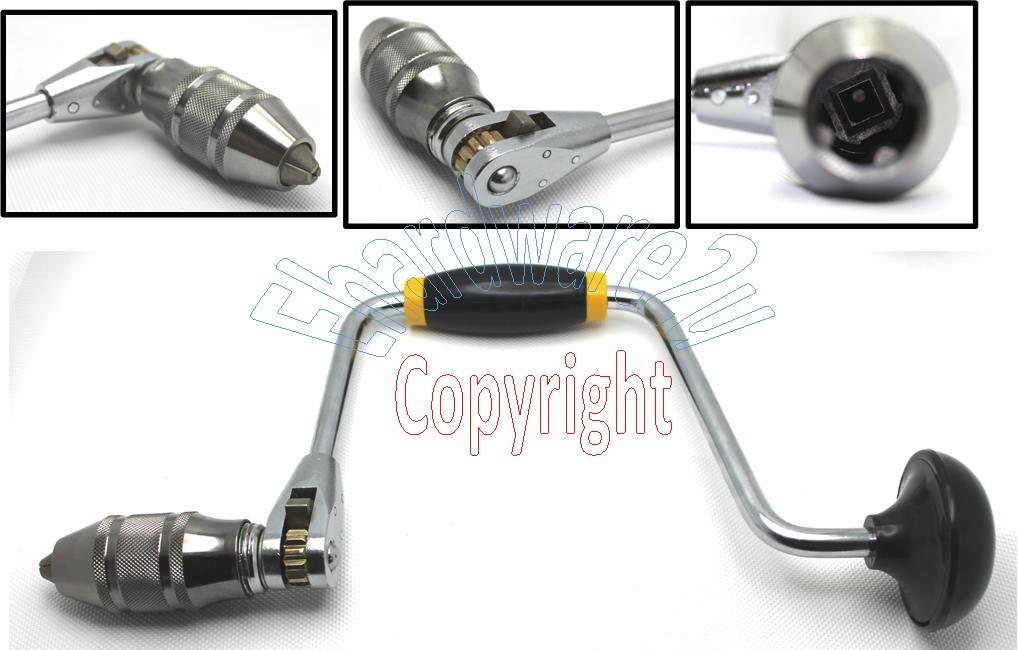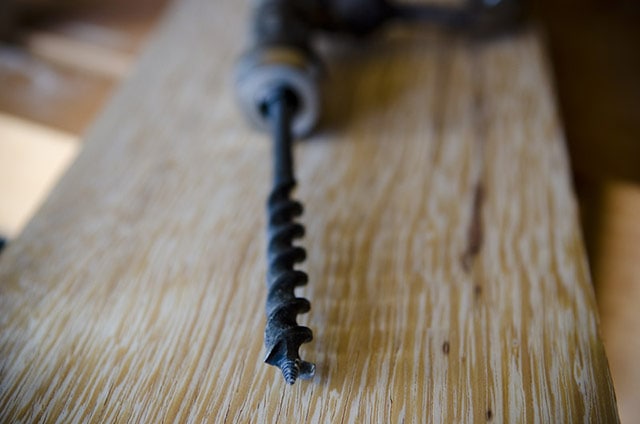

If I ever need to work with a thicker or thinner slab, I add plywood shims under the rails or board being flattened to raise or lower their relative positions, then secure them with either hot glue. I decided on this depth because I’ve never worked with anything deeper than that, and my router can plunge a little over an inch. I made my rails 5 feet long and 2 inches tall, with a sled that is 36 inches long. The largest board I’ve flattened has been 4 feet by about 16 inches. Your rails need to be taller than the board you’re milling, but you can’t make them too tall or your router bit won’t reach low enough to actually touch the top of the slab. The most challenging dimension to determine is the height of the rails, which establishes what thickness of board you can flatten.
#BRACE AND BIT HAND DRILL FULL#
And if you’re looking to try your hand at dining tables, you’ll probably need to go 8-by-4 (a full sheet of plywood) for the base. For coffee tables, you’ll need something more in the 3-by-4-foot range. For end tables, you can probably get away with a sled that’s 2 feet square. This requires some prognostication on your part about what size projects you’re going to build in the future. Decide how big you need your router sled to be.

1 (8-foot) 1-by-6-inch board (or plywood or scrap wood)ġ.If you do not, or are otherwise uncomfortable with anything described here, don’t attempt this project.
#BRACE AND BIT HAND DRILL HOW TO#
If you’re using power tools, you must know how to use them safely and correctly. At minimum, that may include safety glasses, a facemask, and/or ear protection.

Before proceeding with this or any other project on our site, ensure you have all necessary safety gear and know how to use it properly. Warning: DIY projects can be dangerous, even for the most experienced makers. However, it’s pretty easy to build a DIY router sled, allowing you to customize it exactly to your needs and space. Various companies sell metal versions of these tools, and they may be a good investment if you do a lot of flattening. After all, not many of us have the space, budget, or power supply required to purchase industrial-sized milling equipment. But sometimes it’s the only option available. It can take hours, depending on the slab and the size of your router and bit. Repeat until you’ve surfaced the entire board.īy no means is this the best way to flatten a board. To use the sled, push the router, equipped with a flattening bit, back and forth, trimming off a thin slice of the board below. Set up two parallel rails a few feet apart, place a board between them, and put a sled on top of the rails for your router to sit in. Figuring out how to make a router sled is a straightforward project.


 0 kommentar(er)
0 kommentar(er)
